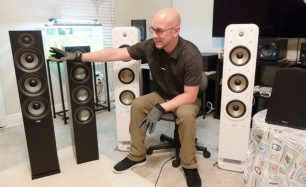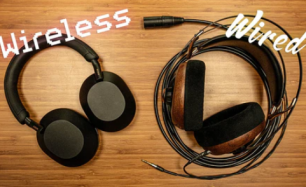Over-Ear vs. In-Ear vs. On-Ear: Which Type of Headphones Is Right for You?
Choosing the right headphones is an important decision, as it can significantly impact your listening experience, comfort, and overall convenience. Whether you are looking for headphones for work, gaming, travel, workouts, or casual music listening, understanding the differences between over-ear, in-ear, and on-ear headphones can help you find the perfect fit for your lifestyle. Each type has its advantages and drawbacks, and knowing how they function will ensure you make an informed decision.

1. Over-Ear Headphones
Over-ear headphones, also known as circumaural headphones, feature large ear cups that fully cover your ears. These headphones provide excellent sound quality and immersive listening experiences, making them a top choice for audiophiles, professionals, and those who prioritize superior sound isolation.
Pros:
- Superior Sound Quality: Over-ear headphones tend to have larger drivers, providing deep bass, balanced mids, and crisp highs.
- Excellent Noise Isolation: With their ear-enclosing design, over-ear models can significantly reduce ambient noise, especially when combined with active noise cancellation (ANC) technology.
- Comfortable for Extended Use: Well-padded ear cushions and adjustable headbands make them ideal for long listening sessions.
- Great for Work and Gaming: Many over-ear headphones feature built-in microphones and surround sound capabilities, making them a great option for work calls and gaming.
Cons:
- Bulky and Less Portable: Over-ear headphones are generally larger, making them less travel-friendly compared to other types.
- Can Be Warm Over Time: Due to their ear-enclosing design, some users may find them too warm after prolonged use.
Recommended Product from AudioNest: Wireless Noise-Canceling Headphones
Experience high-fidelity sound and superior noise cancellation, perfect for work or travel.

2. In-Ear Headphones (Earbuds)
In-ear headphones, commonly known as earbuds, fit directly inside the ear canal. These compact and portable headphones are perfect for those who are always on the go. Many modern earbuds come with wireless technology, making them a convenient choice for workouts, commuting, and casual use.
Pros:
- Highly Portable: Their small size makes them easy to carry around in a pocket or bag.
- Perfect for Exercise: Many earbuds are designed to be sweat-resistant and secure-fitting, making them ideal for workouts.
- Noise Isolation: Some in-ear models provide passive noise isolation by sealing the ear canal, while premium models include active noise cancellation.
- Wireless Convenience: True wireless earbuds eliminate the hassle of tangled cords.
Cons:
Smaller Drivers: While advancements in technology have improved audio quality, in-ear headphones may not deliver the same depth of sound as over-ear models.
Comfort Concerns: Some people find in-ear headphones uncomfortable for long-term use.
Limited Battery Life: Wireless earbuds require regular charging, and battery life varies by model.

3. On-Ear Headphones
On-ear headphones, also called supra-aural headphones, sit directly on top of your ears rather than fully enclosing them. They offer a balance between sound quality, portability, and comfort, making them a great choice for users who want a compromise between over-ear and in-ear options.
Pros:
- More Portable Than Over-Ear Models: While larger than earbuds, on-ear headphones are still relatively compact and travel-friendly.
- Good Sound Quality: They generally provide better audio performance than in-ear models while remaining lightweight.
- Breathable Design: Unlike over-ear headphones, on-ear models allow some airflow, preventing excessive warmth.
Cons:
- Less Noise Isolation: Because they don’t fully cover the ears, on-ear headphones allow more ambient noise in.
- Can Cause Ear Discomfort: Prolonged use may cause pressure on the ears due to the design resting directly on them.
Which Type of Headphones Is Best for You?
The best headphones for you will depend on your needs and preferences. Here’s a quick guide to help you decide:
- Choose Over-Ear Headphones if you want immersive sound quality, noise cancellation, and comfort for long listening sessions.
- Choose In-Ear Headphones if you need a lightweight, portable option for commuting, workouts, or casual listening.
- Choose On-Ear Headphones if you’re looking for a middle ground between sound quality, comfort, and portability.
Regardless of your choice, investing in high-quality headphones ensures a better listening experience and long-term durability.








